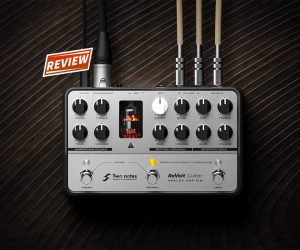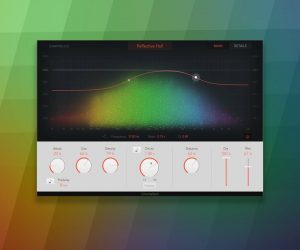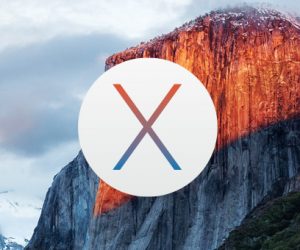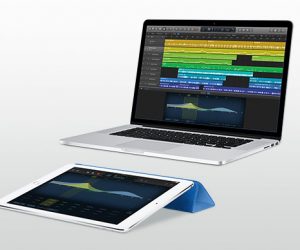Apple Notes 125
Bluetooth Bondi Besties.
No doubt Apple users would recall the furore when the company omitted the ⅛-inch analogue headphone jack from the iPhone 7. Personally I didn’t see the problem as I’d been using Bluetooth headphones since I had an iPhone 4. Untethered headphones perfectly suited the job I had at the time, as I literally had hours of autonomous tasks to complete, and it gave me a chance to indulge in three or four albums up close and personal. Then, if my phone rang, I could surreptitiously take the call and still appear to be working. Wireless headphones are awesome! Why you’d use anything else for casual listening is beyond me.
INFRARED VISIONS
Another brilliant use of wireless headphones I experienced years ago was when a friend and I would compose electronic music in his tiny Bondi Beach flat. The flat had paper-thin walls like Japanese shoji so we had to keep things quiet. He had two sets of wireless headphones that connected via infrared, which meant we could both work on a track without disrupting the neighbours – until sunrise – which happened often. There was plenty of sign language and head nodding and shaking, but without those cans we’d never have composed anything.
Infrared has mostly evaporated from the headphone world, making way for the more prevalent and versatile Bluetooth. Invented by Ericsson in 1994, Bluetooth is known as a personal area network, or PAN, and didn’t make it to us consumers until 1998. There are multiple iterations of the protocol with varying degrees of bandwidth, range and security – important aspects with networks of any kind, be they wireless or wired. However, there’s one major disadvantage when streaming audio via Bluetooth, and that’s latency. Unlike infrared wireless, Bluetooth requires encoding by a codec at the transmission device, then decoding by the same codec at the receiving device. This processing requires time, up around the 40 millisecond mark. As we all know from bitter experience, 40 milliseconds latency in a DAW is a shade shy of useless. If you were attempting my Bondi-bestie’s scheme using Bluetooth you’d be screwed. And forget connecting two sets of cans.
CODEC QUANDARY
Over time there have been various revisions of Bluetooth. Initially Bluetooth wasn’t the widest of protocols. With a 1Mbp/s transfer speed it also wasn’t an option for high quality audio streaming. It often dropped out and took ages to pair with other devices. It was suitable for what the protocol was initially designed for – phone headsets, ringtones, and the usual duties a mobile phone needs to cover. If you remember, music players were a completely seperate device to mobile phones in 1998 – we’re talking before the rise of mp3 files, iPods and iTunes (2001) – the days of Sony’s ATRAC and minidisc.
So at its base, Bluetooth was designed with a standard, basic codec that all Bluetooth devices must support. SBC, or Low Complexity Subband Coding, is essentially for phone call and ringtone quality, and has its own compression algorithm. In addition to SBC there are optional codecs supported in the Bluetooth spec. These include MPEG 1 and 2 Audio (MP2 and MP3), MPEG 3 and 4 (AAC), ATRAC, and aptX. Now if both your receiving and transmitting device support the codec you’re using, there needs to be no additional compression applied to the signal. This is why Apple sticks to AAC with both iTunes files and the codec in its iPhones, iPads, Apple TVs, etc…
It’s interesting to note the additional aptX codec. aptX is the property of Qualcomm these days, and the codec is purported to deliver ‘CD quality’ sound – stated to reproduce up to 20kHz with a dynamic range of 120dB. It also offers a latency of around 32ms over Bluetooth – which, is certainly not quick enough for recording. It’s doubtful we’ll see Apple supporting aptX, as Apple and Qualcomm have been in a legal shouting match over royalty payments Qualcomm is charging Apple for various technologies. Apple is alleging that Qualcomm’s Snapdragon mobile phone chips, which power a range of Samsung and other Android handsets, run into conflict with Apple’s own earlier patents.
PARTY OF 5?
So what does this mean for Apple Bluetooth? And will Bluetooth 5 make any difference to both audio quality and latency? Bandwidth is increased to 2 Mbit/s, so enough to transfer 320kbps MP3 files more than happily. Latency? We’re probably not going to see a great improvement. If you’re playing back MP3s to an Apple Airport Express or Apple TV you’re looking at mixed codecs, and the multiple crunches and compression codecs kicking in. For the fastest transfer with Apple devices you should keep everything in AAC.
With the new iPhone 8 and X, Apple has introduced Bluetooth 5, and until there’s Bluetooth 5 in other Apple products it’s all a bit of an island. Bluetooth 5 devices need to take a step backwards to interface with Bluetooth 4.2 and 4 devices.
What Bluetooth 5 does bring is greater distance coverage, up to around 240 metres, which makes it perfectly suited to the long fabled internet-of-things. These things will include your home lighting, security monitoring, and other general domestic ’smart-home’ antics – like the bottle of laundry detergent that senses it’s close to empty and orders itself a replacement. Any good for audio? I doubt it.
It appears Bluetooth won’t be bringing back the Bondi Besties routine any time soon.
















RESPONSES